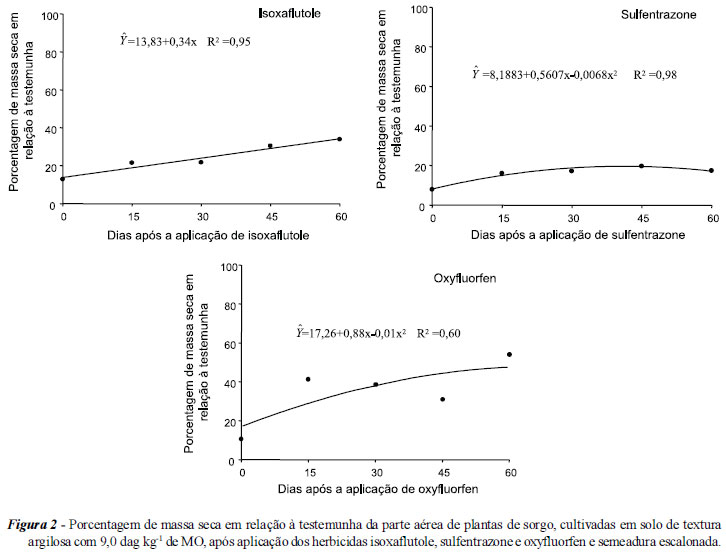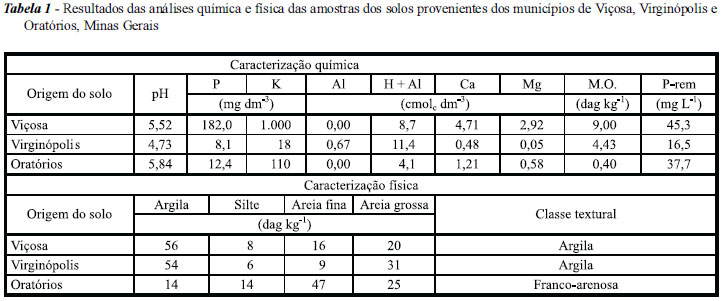The physical and chemical properties of soils, as well as climatic conditions, influence the behavior of herbicides applied in pre-emergence. This work aimed to evaluate the residual effect of sulfentrazone, isoxaflutole and oxyfluorfen in three soils. The trial was conducted in a protected environment in a randomized block experimental design, with four replications. The treatments for each soil were arranged in a 3 x 5 factorial, being three herbicides and five sowing periods after herbicide application. Sulfentrazone, isoxaflutole and oxyfluorfen were applied at 0.5 kg ha-1, 0.72 kg ha-1 and 0.113 kg ha-1, respectively, on plastic pots with 250 mL volume, previously filled with the two clay texture soils and the sandy loam texture soil. Subsequently, the bioindicator species Sorghum bicolor was sown at 0, 15, 30, 45 and 60 days after application (DAA). A control with no herbicide treatment was sown at different times for each soil and used as a comparison in the evaluations. At 21 days after sowing in each season, intoxication and plant growth were evaluated by means of shoot dry mass. Sorghum plants in the clay soil with 9.0 dag kg-1 of organic matter (O.M.), submitted to the application of isoxaflutole, sulfentrazone and oxyfluorfen, produced shoot dry mass over the control to 34, 20 and 40%, respectively, at 60 DAA. In the sandy loam soil, it was observed a high residual effect of sulfentrazone and oxyfluorfen, and a decrease in the residual effect of isoxaflutole over time, with 80, 90 and 40% control at 60 DAA, respectively. In the clay soil with 4.4 dag kg-1 of O.M., the herbicide isoxaflutole was found to lose control efficacy over time, unlike oxyfluorfen, which showed practically constant control in all the evaluated periods, and sulfentrazone, which showed high residual effect during the study period. The inherent characteristics of each herbicide, as well as the differences in organic matter content and texture between the soils influence the persistence of sulfentrazone, isoxaflutole and oxyfluorfen in the soil. Greater residual effect of oxyfluorfen was observed in sandy loam soil, and isoxaflutole in clay soil with high content of organic matter, while sulfentrazone presented high residual effect in the three soils.
herbicide; persistence; bioassay; environmental impact








